2019-2022 GIANTS OF THE ICE AGE by Auragentum
While there’s always a dinosaur coin series (or two) in progress at any one time, it’s extremely rare to see coins featuring life that existed after their extinction some 65 million years ago. That’s a shame, as there are some incredible animals over the period. An especially fascinating time was the Pleistocene, an era which saw large megafauna related to modern species, that interacted with many of our own forebears, back to the Neanderthals.
German dealer Auragentum launched a bullion coin series in 2019 that is showcasing eight of these large beasts. Struck for them by German mint, Leipziger Edelmetallverarbeitung, two coins are issued every year, and at the time of writing there have been five issues, across three different formats.
The most popular coin is, as always, the one ounce 0.999 silver coin. This has a mintage per design of just 15,000 pieces and a brilliant uncirculated finish. Also sharing that finish and metal is the appropriately huge one-kilo variant. These are considerably rarer at 1,000 pieces, but that’s still a healthy number for the size of coin. Lastly, and in a proof finish, is a one ounce 0.9999 gold version. This also has a 1,000 mintage, and it comes boxed with a Certificate of Authenticity.
Each issue has a similar design, of course, depicting the animal in its habitat, surrounded by a border over which parts of the animal overlap. The series title, composition and date are all inscribed on the reverse face. ENgraved here on the bigger silver coin, and the gold, is the coin serial number. In a nice touch, the border also holds eight silhouette pictograms that represent the series subjects. The obverse is simply the coat of arms of the African state, the Republic of Ghana.
A pretty cool series, and one that’s quite unique in the bullion market. Indeed, even the numismatic market is mostly devoid of coins with this subject, and that’s a shame. Six issues available now, with the final two in 2022.
2019 Woolly Mammoth (Mammuthus primigenius)
The woolly mammoth lived during the Pleistocene until its extinction in the early Holocene epoch. It was broadly similar in size to the African Elephant with males hitting shoulder heights of 3.4 m, and weights of 6 tons. Females reached 2.9 m and 4 tons.
Adapted to the cold with a thick, two-layer fur covering, they had small ears and tail to guard against frostbite and heat loss. Tusks were huge and curved.
Their diet consisted of sedges and grasses, the predominant vegetation on the Mammoth Steppe, which covered northern Eurasia and North America. They lived as long as sixty years.
They only disappeared around 10,000 years ago, although some populations were still present on St Paul Island as recent as 5,600 years ago and on Wrangel Island 4,000 years ago. Remains are common, and include frozen corpses that are almost complete.
2019 Irish Elk (Megaloceros giganteus)
Also called the Giant Deer, it is the largest of its type to ever exist and lived across whole swathes of Eurasia from Ireland to the Lake Baikal area of Siberia.
Believed to have gone extinct around 7,500 years ago (the oldest dated remains are 7,700 years old). Despite the name, they are not related to modern elk, but more to Fallow Deer.
It stood about 2.1 m tall at the shoulders and carried the largest antlers of any known deer, a maximum of 3.65 m from tip to tip and 40 kg in weight. The animal weighed up to 700 kg, the heaviest known “Old World deer”.
Based on Upper Palaeolithic cave paintings, the Irish elk seems to have had overall light colouration, with a dark stripe running along the back, a stripe on either side from shoulder to haunch, a dark collar on the throat and a chinstrap, and a dark hump between the shoulder blades.
2020 Smilodon (Smilodon Fatalis)
The Smilodon is best known as the Sabre-toothed Tiger, despite not being closely related to any modern species. It lived in the Americas during the Pleistocene epoch (2.5 mya – 10,000 years ago).
More robustly built than any extant cat, with particularly well-developed forelimbs and exceptionally long upper canine teeth, its jaw had a bigger gape than that of modern cats, and its upper canines were slender and fragile, adapted for precision killing.
Of the three known species, S. populator from South America was the largest, weighing 220 to 436 kg, and up to 1.2 m tall. In North America, Smilodon hunted large herbivores such as bison and camels, and is thought to have killed its prey by holding it still with its forelimbs and biting it.
Scientists debate whether Smilodon had a social or a solitary lifestyle, but it probably lived in closed habitats such as forests and bush, which would have provided cover for ambushing prey.
2020 Cave Bear (Ursus spelaeus)
The cave bear lived in Europe and Asia during the Pleistocene and became extinct about 24,000 years ago during the Last Glacial Maximum.
Standing close to 3.5 meters tall while rearing up, the cave bear had a very broad, domed skull with a steep forehead. Its stout body had long thighs, massive shins and in-turning feet, making it similar in skeletal structure to the brown bear. Some male specimens weighed as much as 1,000 kg.
The Cave Bear is believed to have been almost entirely herbivorous, only ocassionally scavenging animal protein. The main cause of death seems to have been in hibernation as there was little alive at the time capable of taking a healthy adult down.
Images of Cave Bears are common in cave paintings and there are numerous examples of the use of bones for tools and for ceremonial purposes dating back to Neanderthal times.
2021 Woolly Rhinoceros (Coelodonta antiquitatis)
Common across Europe and Asia until the end of the last glacial period, the Woolly Rhino was covered in long thick hair. an d lived on the Mammoth Steppe alongside its elephant counterpart.
Adult males approached 3.8 m from head to tail (2 m tall at the shoulder), and could weigh up to 2,700 kg. They had a massive hump on the shoulders, believed to support a huge front keratin horn.
Numerous frozen corpses have given us much physical data. They were reddish-brown, with a thick undercoat, although hair on the legs was shorter to prevent a build up of ice.
Adaptations to the cold also included shorter ears than modern rhinos, short tails, and thick skin, ranging from 5-15 mm. They fed on grasses and sedges, common on the steppe, and healthy adults had no natural predators.
Like many lmegafauna of the time, they were common subjects for cave paintings.
2021 Aurochs (Bos primigenius)
During the Pliocene the colder climate caused an extension of open grassland, which led to the evolution of large grazers such as wild bovines. The oldest aurochs remains have been dated to about 2 million years ago, in India. The Indian subspecies was the first to appear. During the Pleistocene the species migrated west into the Middle East as well as to the east. They reached Europe about 270,000 years ago.
The proportions and body shape of the aurochs were strikingly different from many modern cattle breeds. For example, the legs were considerably longer and more slender, resulting in a shoulder height that nearly equalled the trunk length. The skull, carrying the large horns, was substantially larger and more elongated than in most cattle breeds. As in other wild bovines, the body shape of the aurochs was athletic, and especially in bulls, showed a strongly expressed neck and shoulder musculature.
The aurochs were one of the largest herbivores in postglacial Europe, comparable to the European bison. During the Holocene, aurochs from Denmark and Germany had an average height at the shoulders of 155–180 cm in bulls. Aurochs from the Late Middle Pleistocene are estimated to have weighed up to 1,500 kg. Aurochs horns could reach 80 cm in length and between 10 and 20 cm in diameter.
2022 Reindeer (Rangifer tarandus)
The “glacial-interglacial cycles of the upper Pleistocene had a major influence on the evolution” of Rangifer tarandus and other Arctic and subarctic species. In 1986, Kurtén reported that the oldest reindeer fossil was an “antler of tundra reindeer type from the sands of Süssenborn” in the Pleistocene period (680,000 to 620,000 BP). By the 4-Würm period (110,000–70,000 to 12,000–10,000 BP) its European range was very extensive.
In most cervid species, only males grow antlers; the reindeer is the only cervid species in which females also grow them normally. In the largest subspecies, the antlers of large bulls can range up to 100 cm (39 in) in width and 135 cm (53 in) in beam length. They have the largest antlers relative to body size among living deer species. The colour of the fur varies considerably, both between individuals and depending on season and subspecies. Northern populations, which are usually relatively small, are whiter.
Reindeer are ruminants, having a four-chambered stomach. They mainly eat lichens in winter, especially reindeer lichen; they are the only large mammal able to metabolise it, owing to specialised bacteria and protozoa in their gut.
2022 Cave Lion (Panthera Spelaea)
The Cave Lion, Panthera spelaea, evolved from P. fossilis about 460,000 years ago in central Europe during the late Saalian glaciation or early Eemian and would have been common throughout Eurasia from 450,000 to 13,000 years ago, when it went extinct.
Analysis of fossil bone samples revealed that it was highly distinct and genetically isolated from the modern lion (Panthera leo) occurring in Africa and Central Asia. P. spelaea was thought to have been one of the largest lion species. The skeleton of an adult male found in 1985 near Siegsdorf in Germany had a shoulder height of around 1.2 m and a head-body length of 2.1 m without the tail, similar in size to large modern lions, and larger examples have been found, with the heaviest estimated to weigh 339 kg.
The cave lion was probably predominantly found in open habitats such as steppe and grasslands, although it would also have occurred in open woodlands as well. It was one of the keystone species of the mammoth steppe, being one of the main apex predators alongside grey wolf, cave hyena and brown bear. Cave bear cubs, reindeer and other cervids were prominent in the diet of cave lions.
COMMON OBVERSE
The coat of arms of Ghana was designed by Ghanaian artist Nii Amon Kotei and introduced on 4 March 1957.
The first quarter, (upper left) shows a sword used by chiefs, and a staff, used by the linguist, at ceremonies. The second quarter shows Osu Castle, the presidential palace on the Gulf of Guinea. The third quarter of the shield shows a cacao tree, while the fourth quarter shows a gold mine.
A gold lion centred on a green St George’s Cross with gold fimbriation on the field of blue, represents the link with the Commonwealth of Nations. The crest is a Black star of Africa with gold outline, upon a torse in the national colours.
Supporting the shield are two golden Tawny eagles, with the Order of the Star of Ghana suspended from their necks. The compartment they stand on is a grassy field, under which a scroll bears the national motto of Ghana: Freedom and Justice. The shield stands for a weapon which helps to fight poverty,ignorance and hunger
SPECIFICATION
| GIANTS OF THE ICE AGE RANGE |
|||
| DENOMINATION | 5 Cedis (Ghana) | 1,000 Cedis (Ghana) | 500 Cedis (Ghana) |
| COMPOSITION | 0.999 silver | 0.999 silver | 0.9999 gold |
| WEIGHT | 31.1 grams | 1,000 grams | 31.1 grams |
| DIMENSIONS | 38.6 mm | 100.0 mm | 38.6 mm |
| FINISH | Bullion | Bullion | Proof |
| MODIFICATIONS | None | Engraved serial | Engraved serial |
| MINTAGE | 15,000 | 1,000 | 1,000 |
| BOX / C.O.A. | No / No | No / Yes | Yes / Yes |


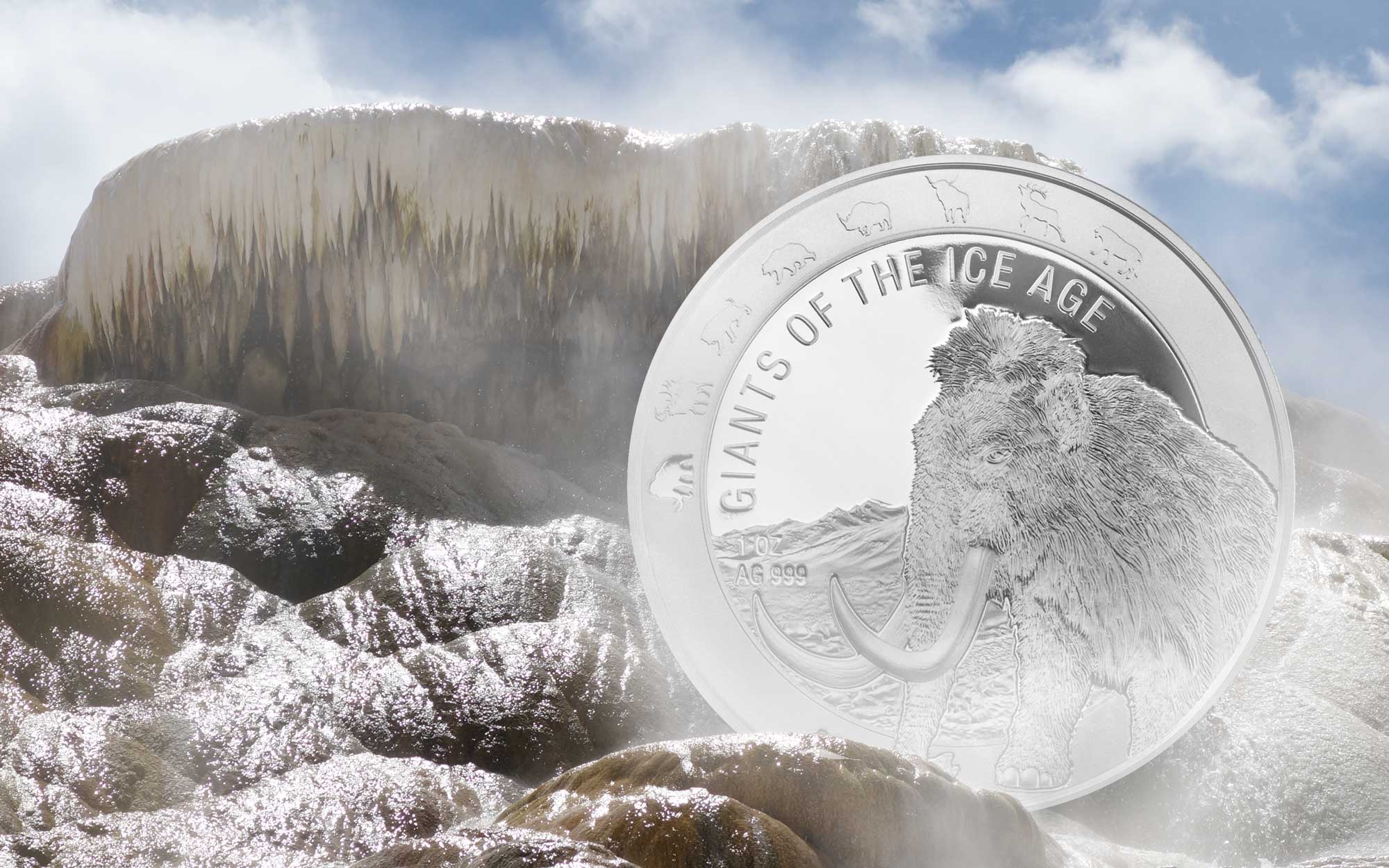

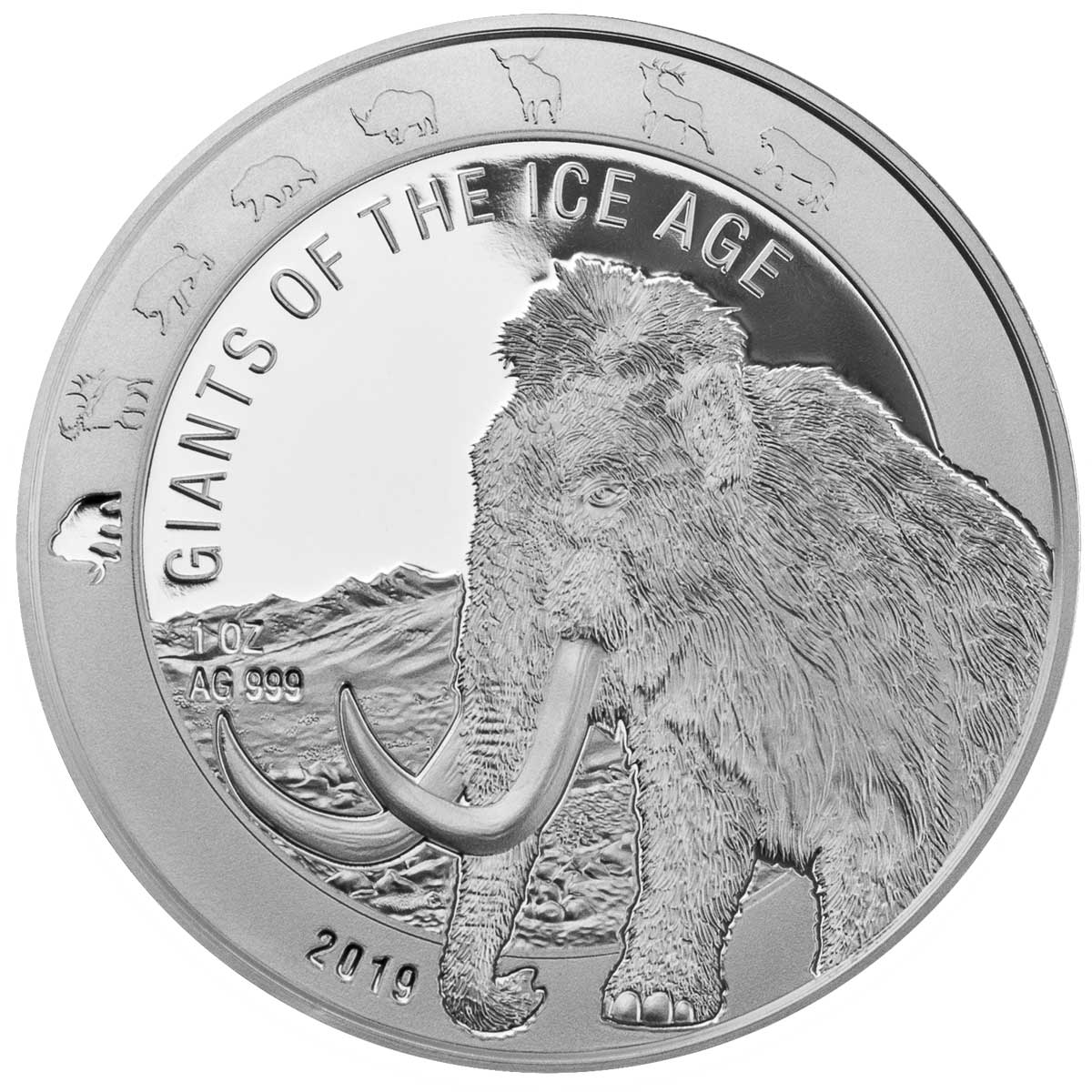
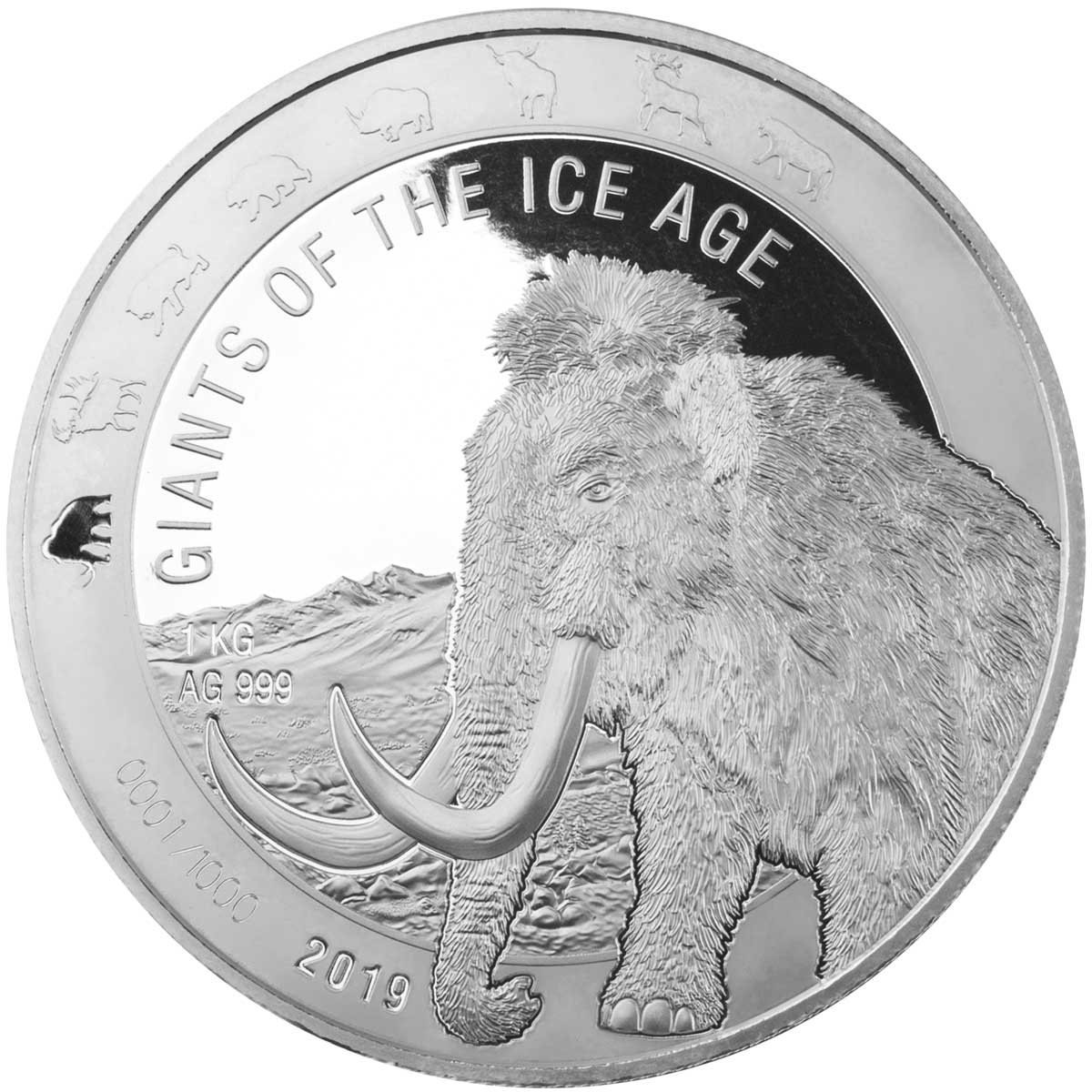

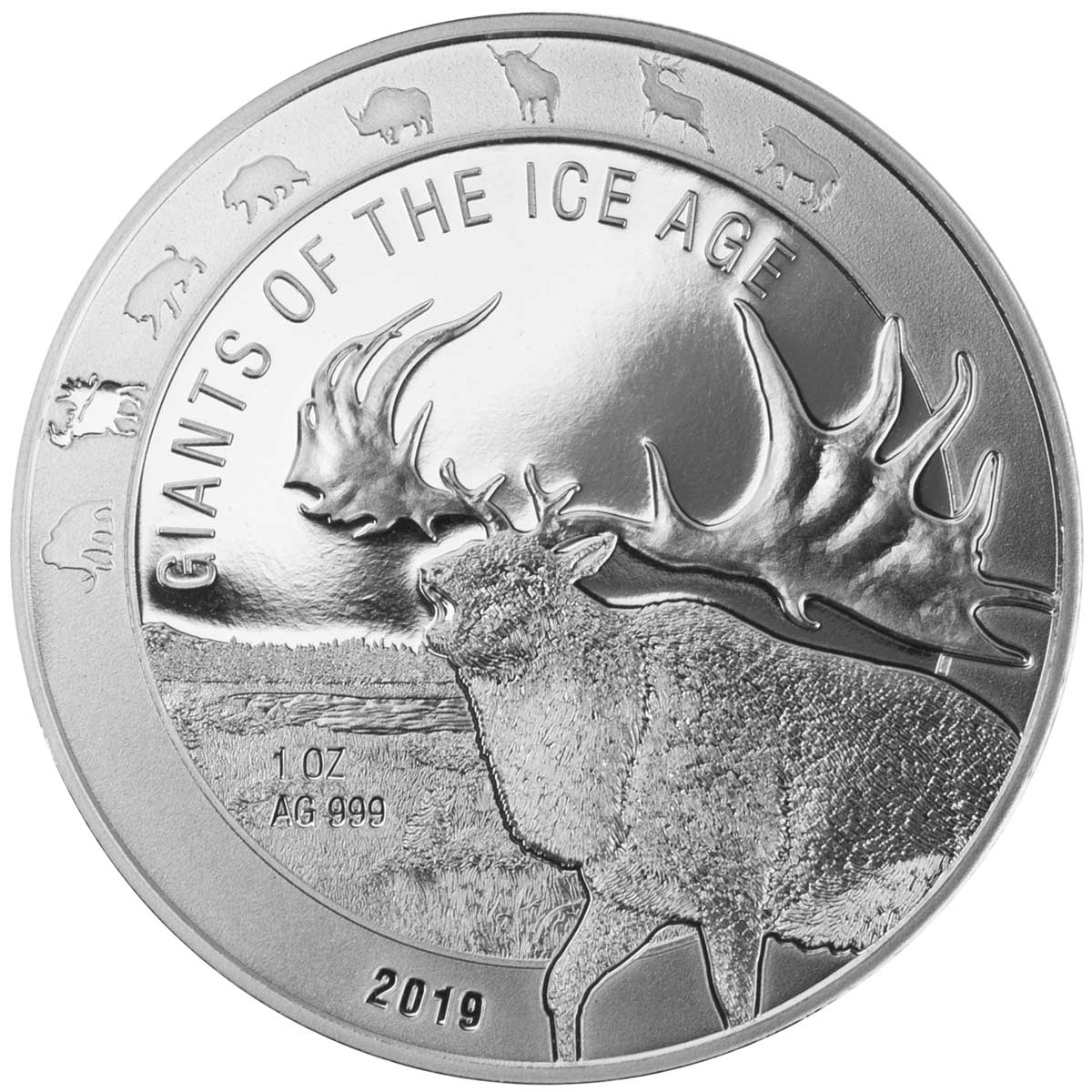

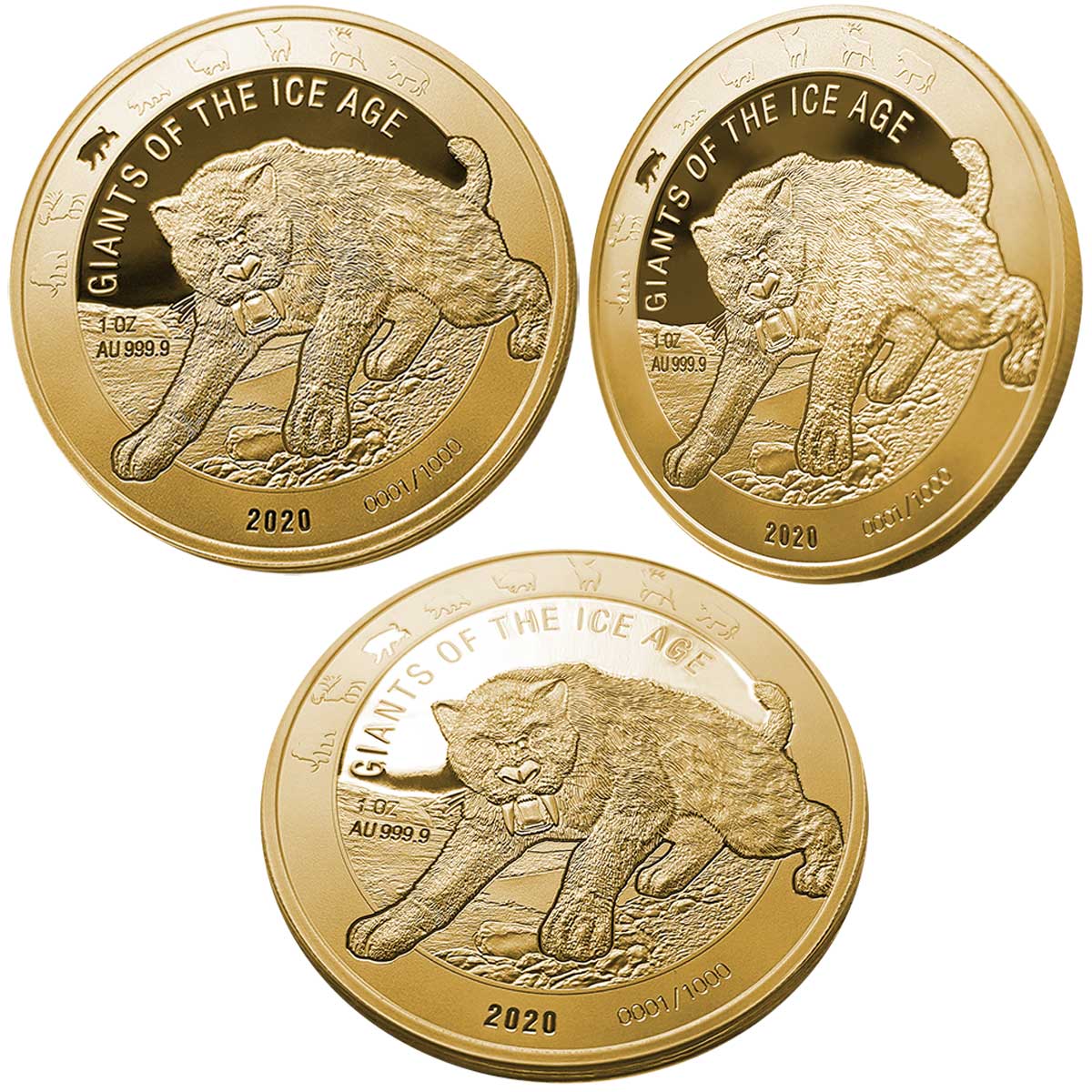

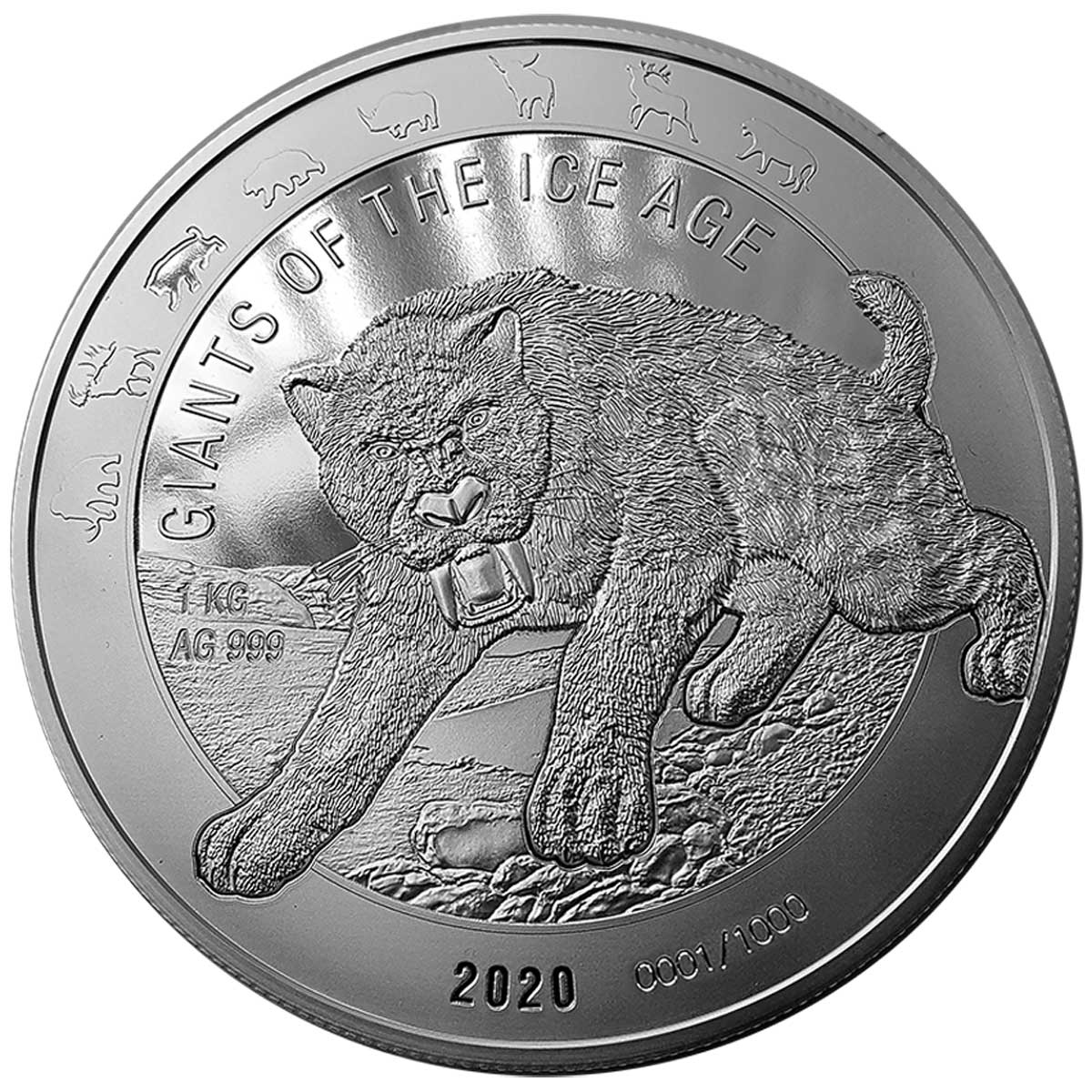

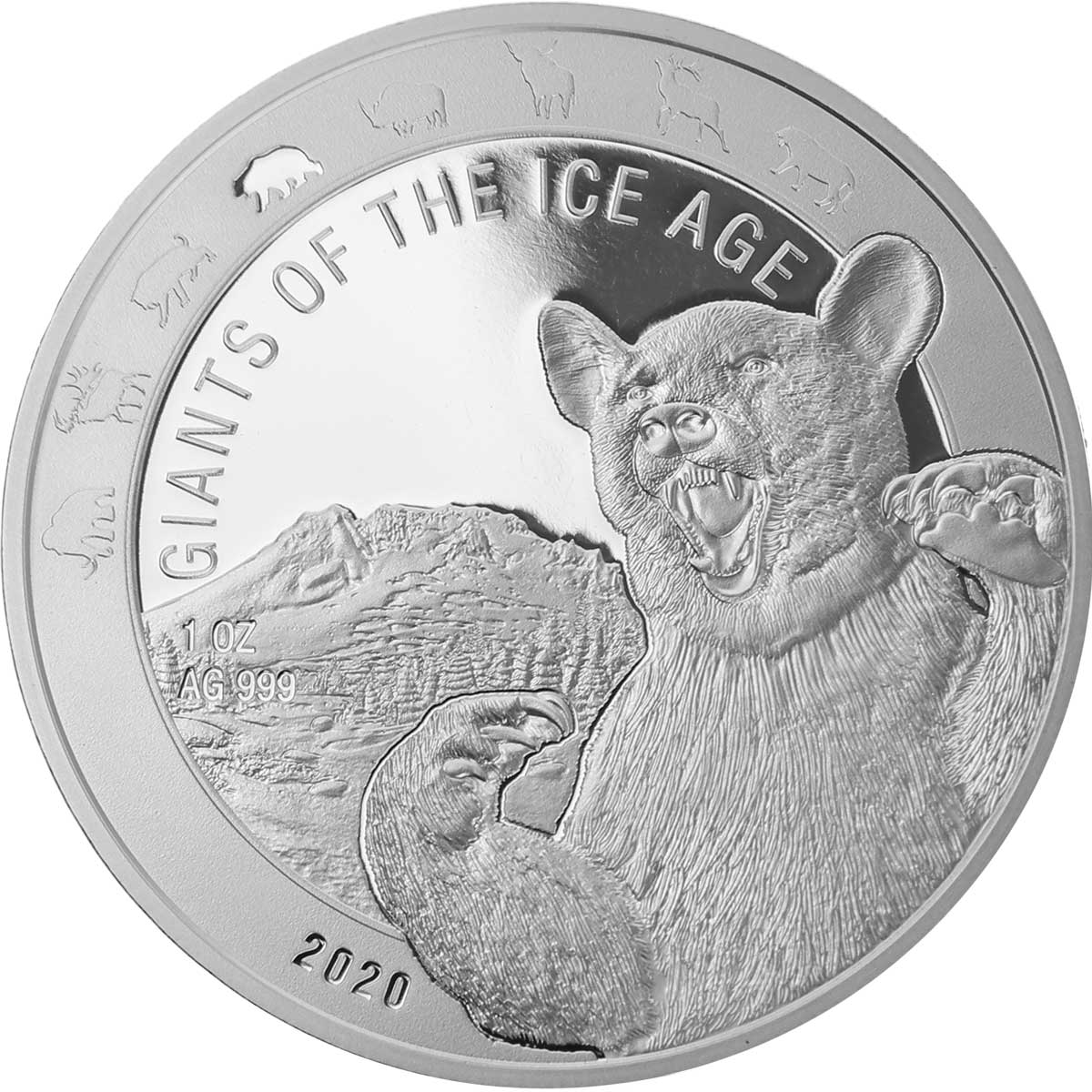
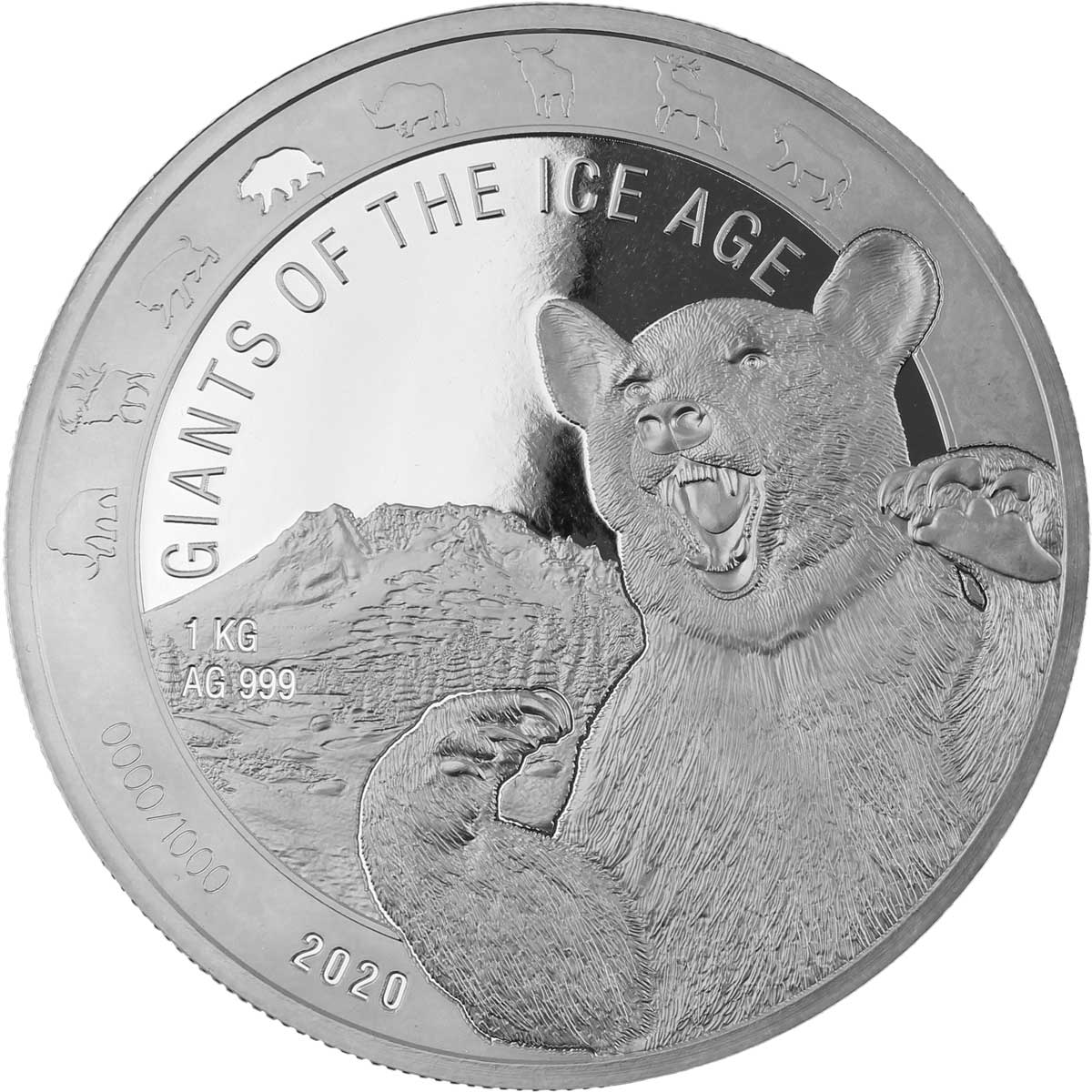

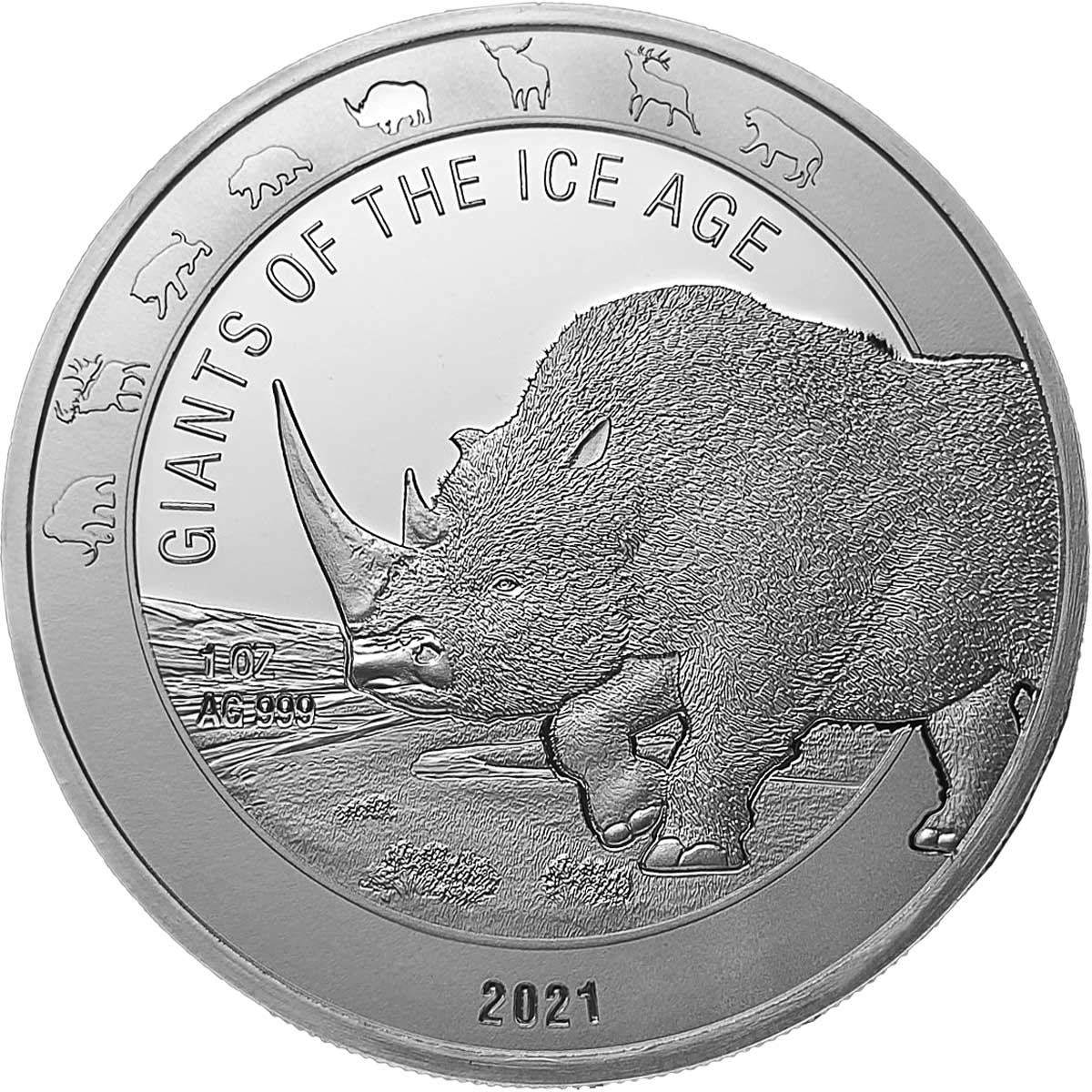
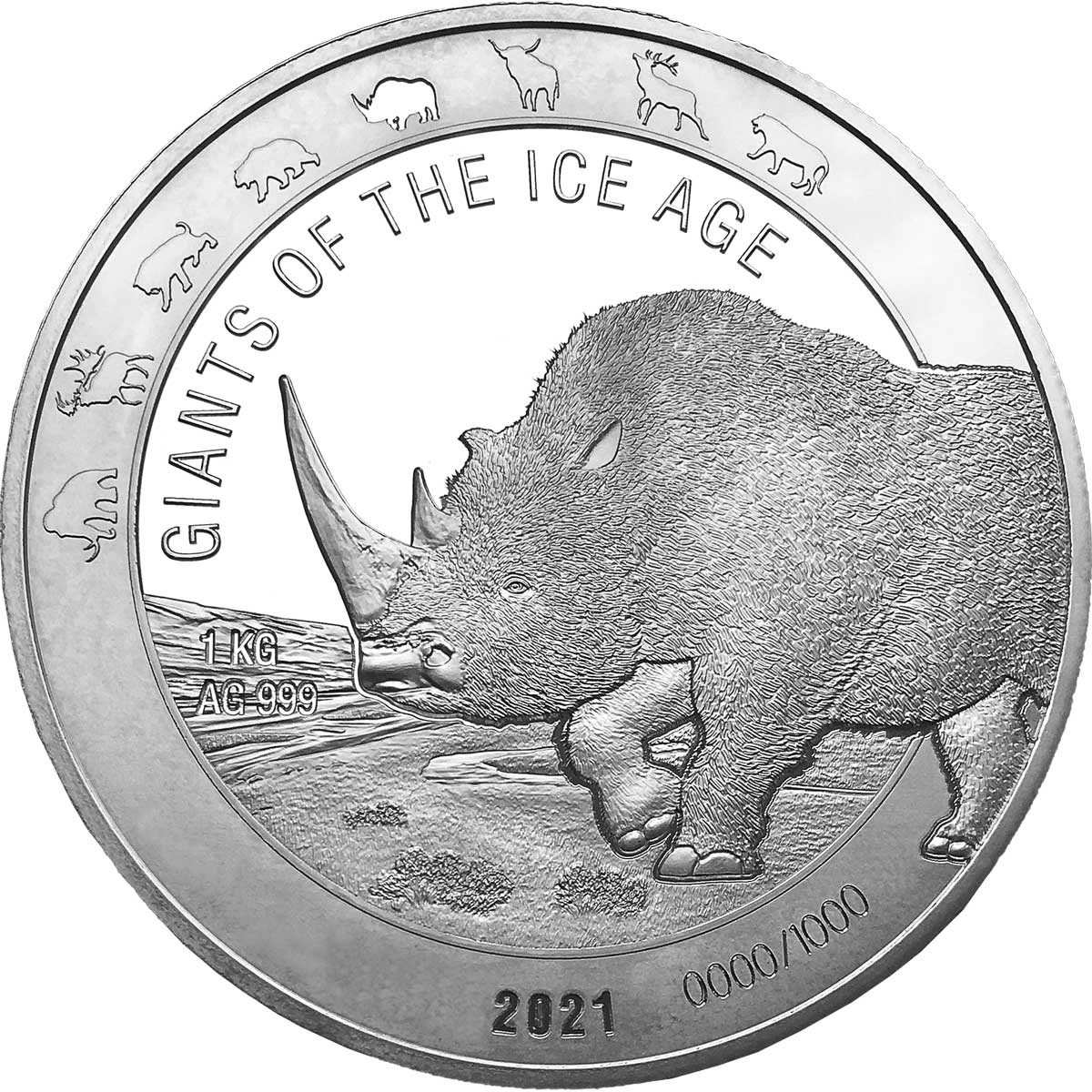
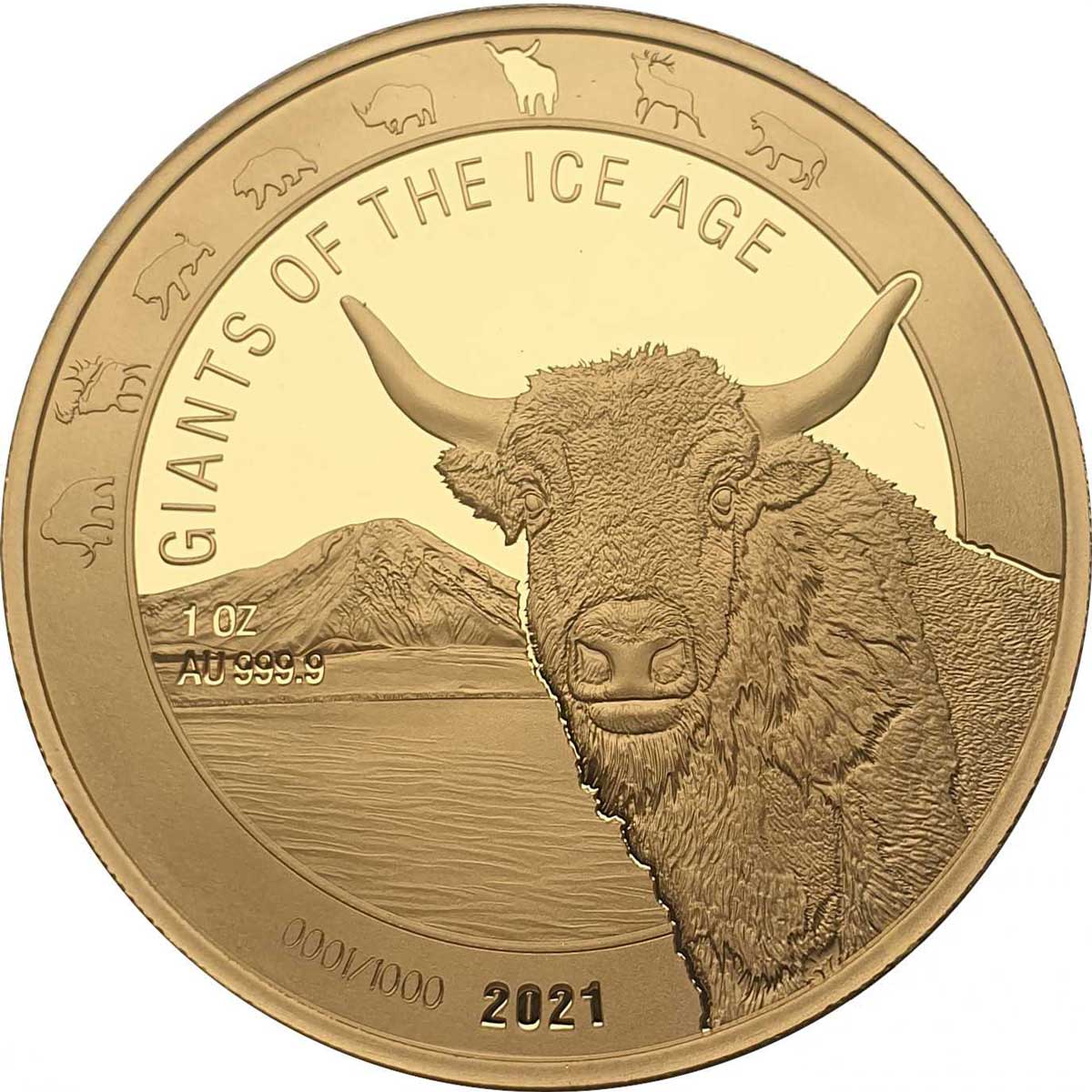


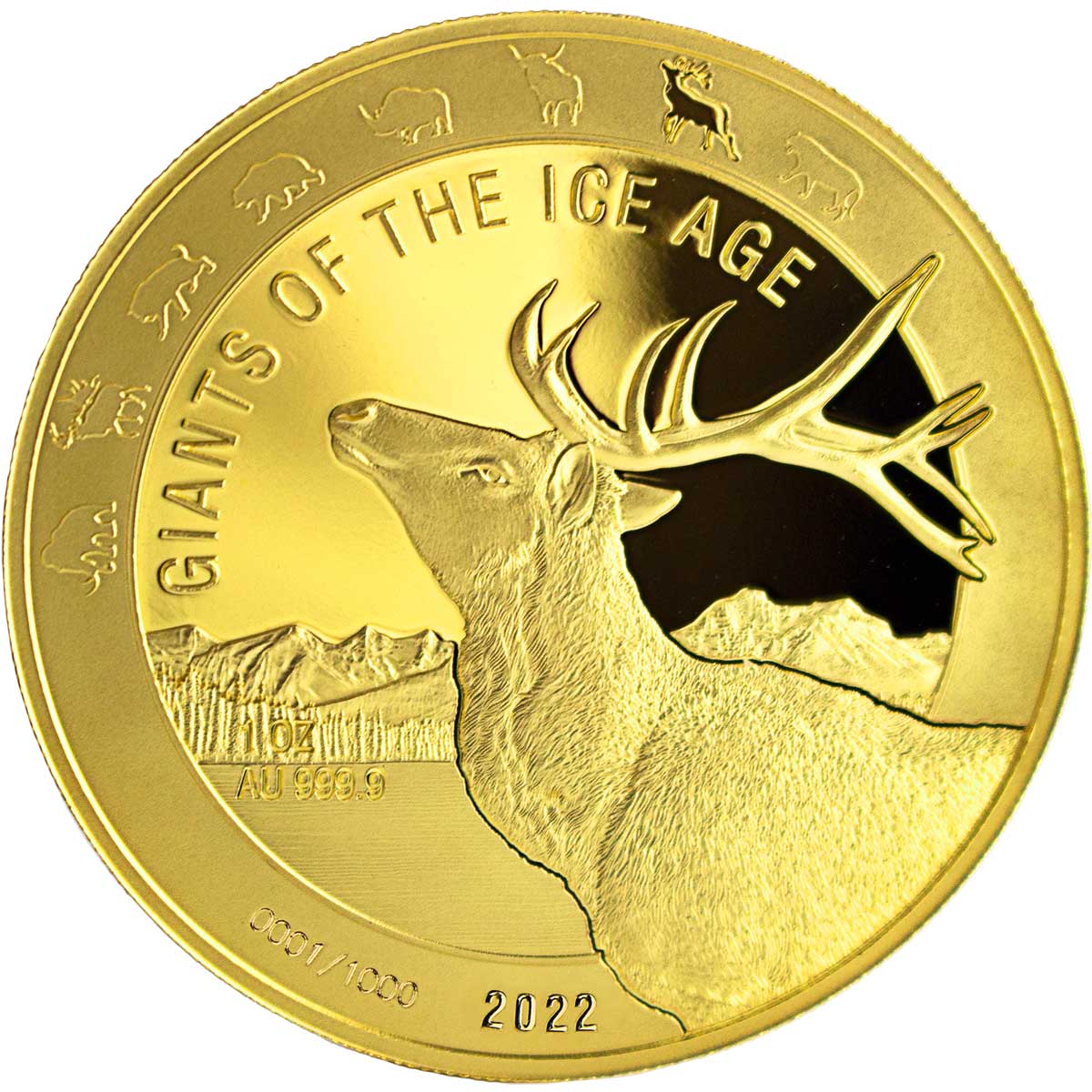


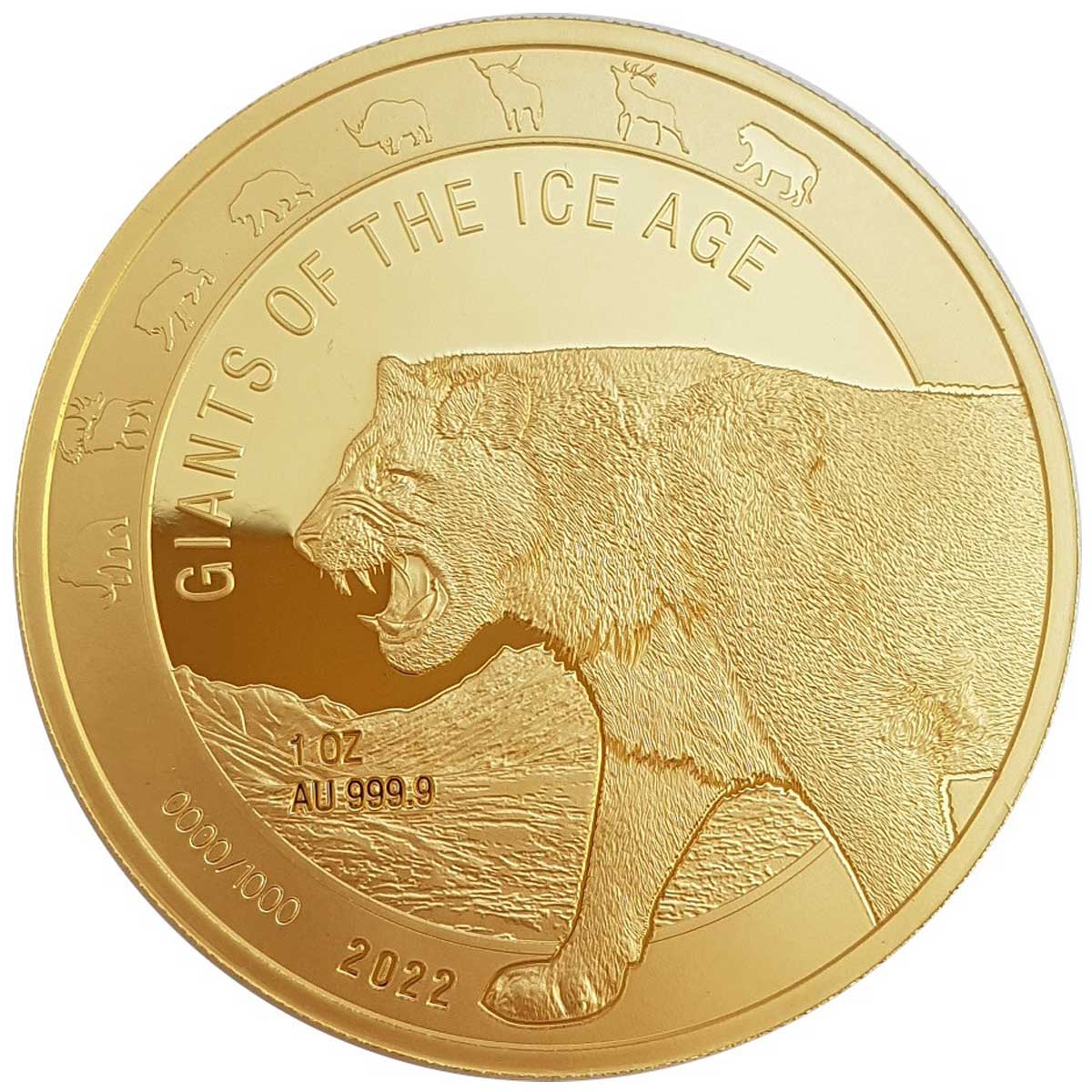
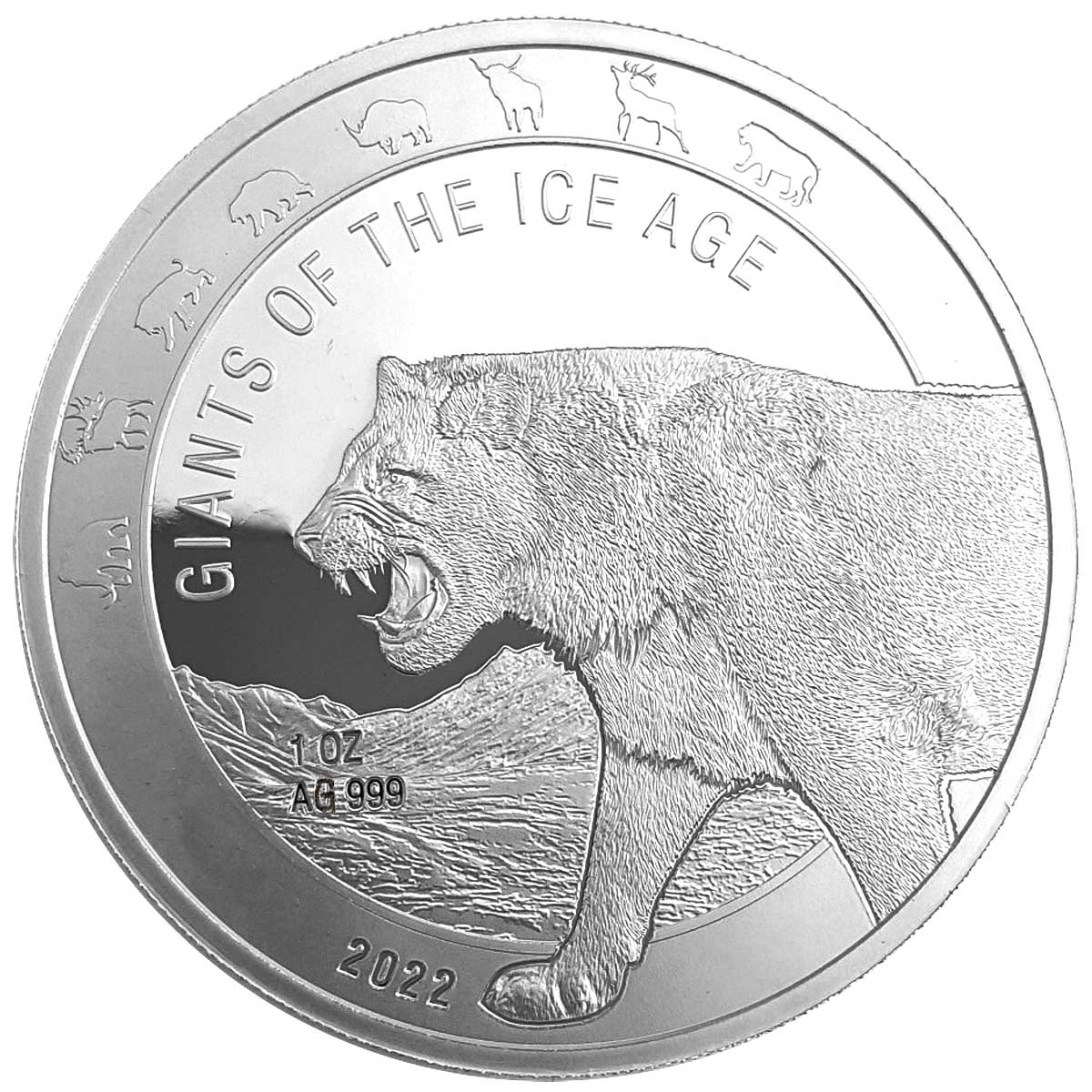




Leave A Comment